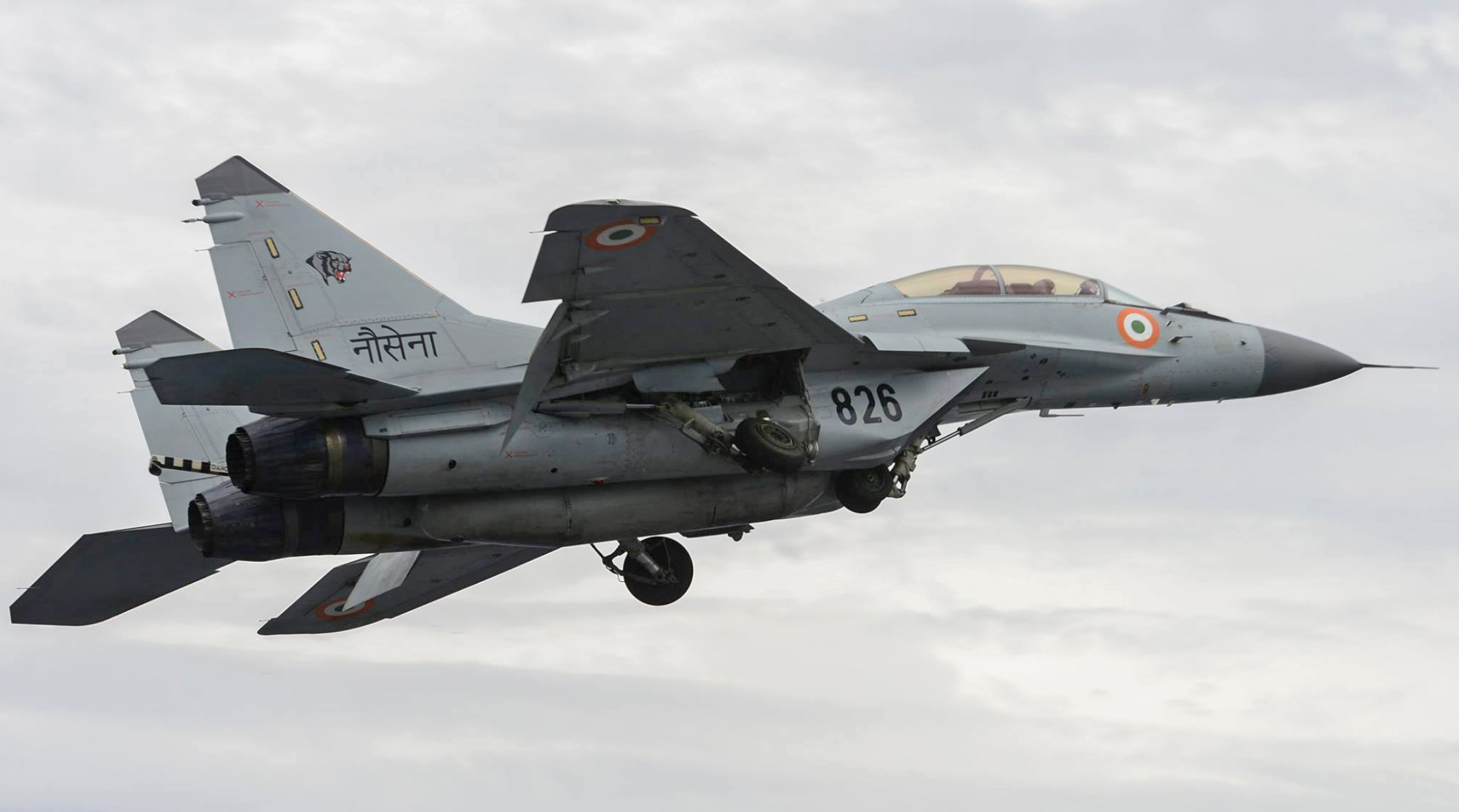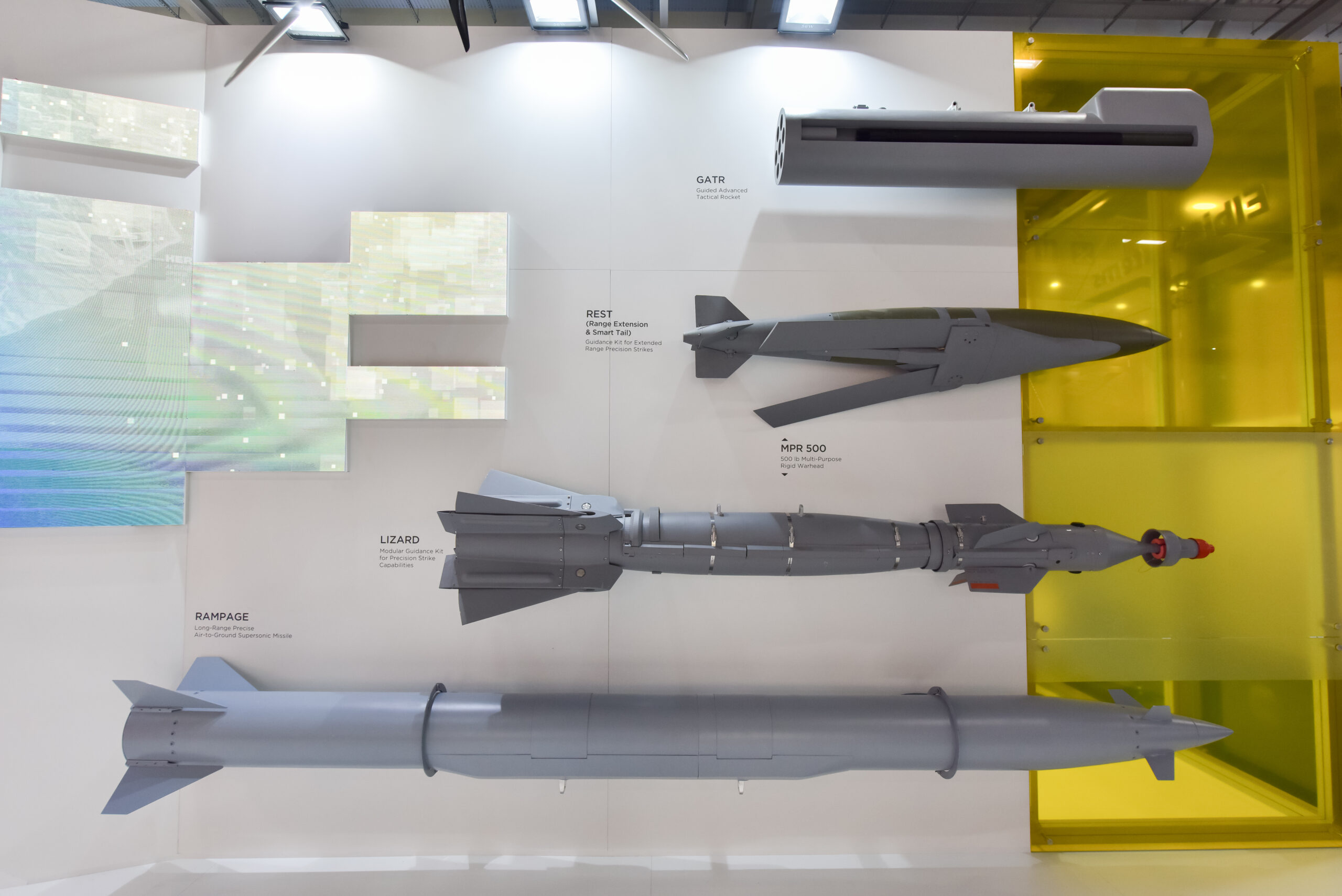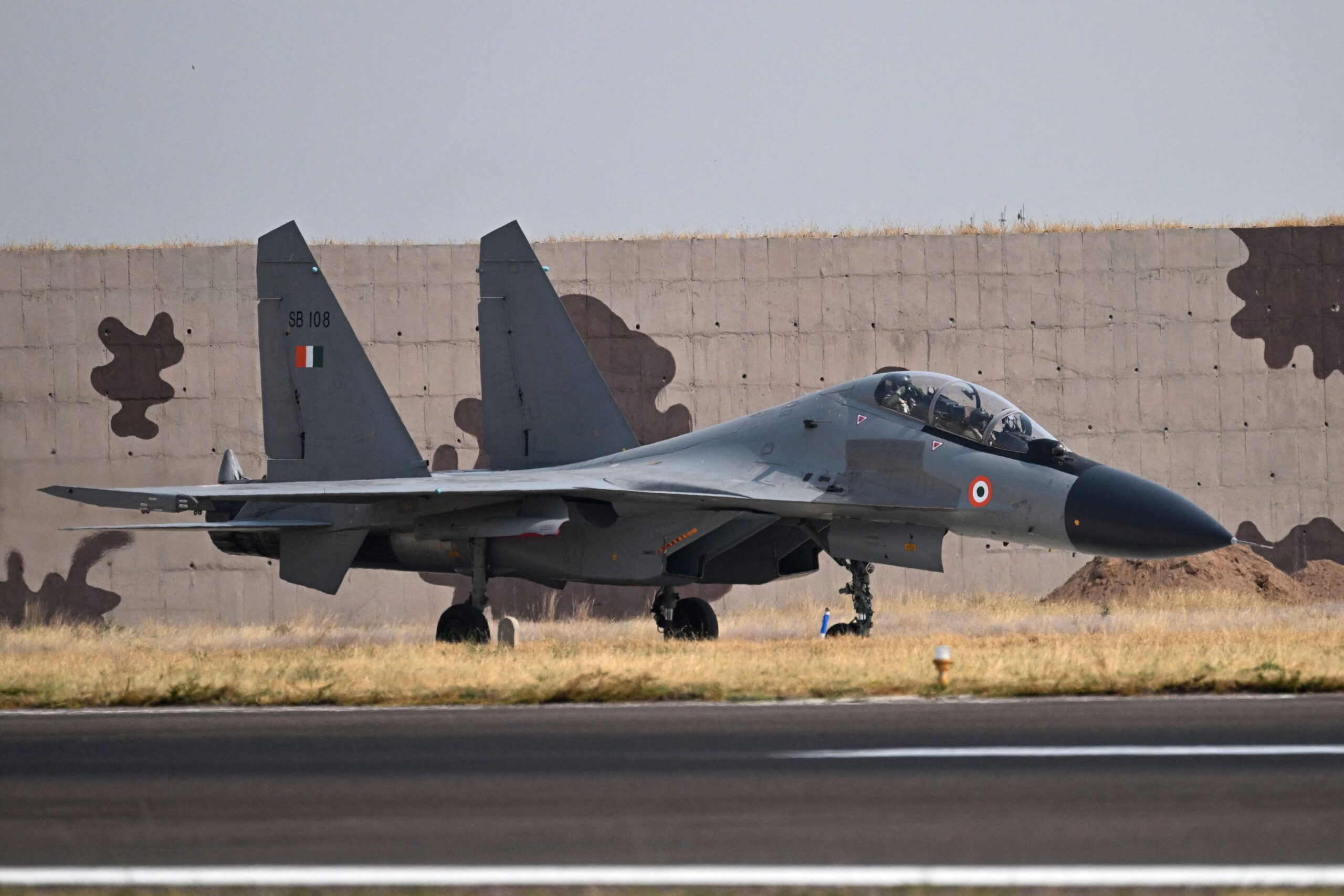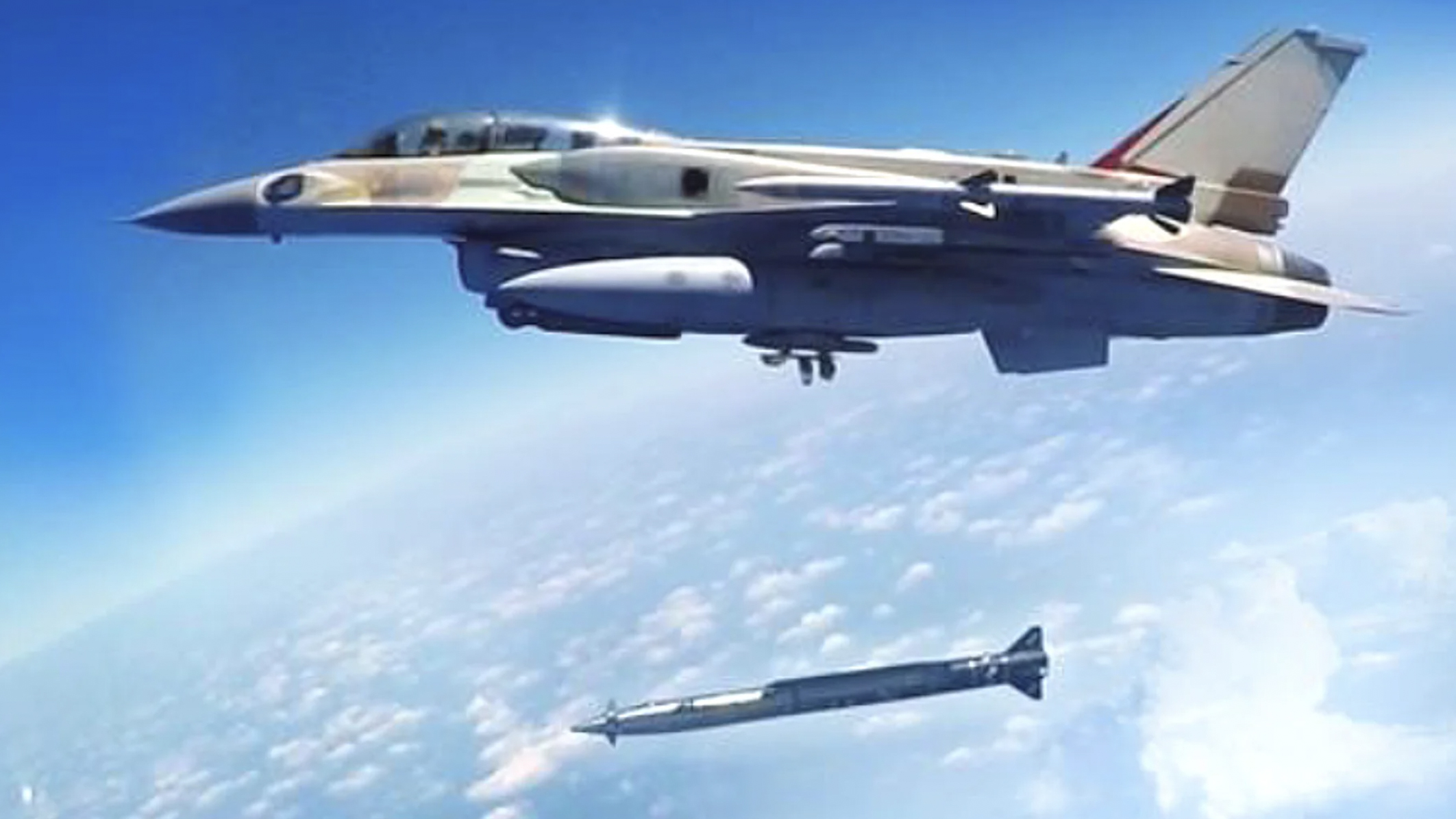Photos confirm that India is the first known export customer for the Israeli-made Rampage missile, an air-launched, precision-guided, high-speed weapon, which is an adapted guided artillery rocket, similar to the Guided Multiple Launch Rocket System (GMLRS). New Delhi’s acquisition of the Rampage continues a close military relationship between the two countries, especially when it comes to missile sales, and provides India with a powerful weapon that would appear to have particular utility for future border confrontations with neighboring Pakistan, but also contingencies involving China.
Two photos that have appeared on social media confirm that the Rampage missile is now in the hands of the Indian Navy, specifically on its Russian-made MiG-29K/KUB Fulcrum carrier-based fighters.

One of these photos — seen in the tweet embedded below — shows an example of the missile carried on a special pylon on the inboard underwing station on one of the MiGs. The pylon and missile have calibration markings of the kind used for weapons release trials.
The other photo, shown below, dates back to at least August this year. It shows Indian Navy personnel examining a Rampage missile in a hangar, alongside a visiting delegation from the United Arab Emirates, with more MiG-29K/KUB jets arranged behind.

Considering how long at least one of these photos has now been in circulation, it’s surprising, to say the least, that the Indian acquisition of the Rampage, and efforts to integrate it on the Russian-made fighter, has not been more widely reported.
First breaking cover back in 2018, the Rampage was developed by Israeli Military Industries Systems, or IMI Systems, in cooperation with Israel Aerospace Industries (IAI), as an air-launched derivative of IMI Systems’ ground-launched Extended Range Artillery guided artillery rocket, or EXTRA. Development was likely accelerated by what appear to be only minimal changes to the weapon’s external design for the air-launched role, primarily the addition of a reinforced section of the center body that includes the attachment lugs.

Said to be able to hit targets more than 90 miles away, the Rampage has been identified as a likely weapon for the Israeli Air Force, especially bearing in mind that country’s cross-border campaign against Iranian-backed militants. Here, a standoff capability is of great importance, all the more so when also dealing with more complex air defense systems, as in Syria, for example. While there have been rumors of Israeli use of the Rampage, this remains unconfirmed and it’s clear also that the weapon is being very squarely aimed at export customers, too.
At this point, India is the first confirmed operator of the Rampage, and it would seem to offer several advantages over other long-range air-launched weapons in the Indian armory.
Using a GPS-assisted inertial navigation system (INS) guidance system, the Rampage is said to be effective even against hostile jamming or other efforts to interfere with GPS receivers. Bearing in mind the kinds of high-tech adversaries that India might find itself fighting against — chiefly China and Pakistan — electronic warfare attacks are a very likely prospect in future conflict scenarios.

With its range of 90 miles or more, the Rampage can be launched outside the engagement envelopes of many short- and medium-range air defense systems, dramatically improving the survivability of the host aircraft.
At the same time, thanks to its rocket motor, the Rampage is a notably fast weapon, making it better suited to striking time-sensitive targets, which might even include mobile air defense systems or mobile ballistic missiles, providing their coordinates can be established in the required timeframe. According to IMI Systems, the Rampage can hit a target out to its maximum range in as little as five minutes.
As an air-launched version of a ground-launched ballistic weapon, the Rampage is also likely cheaper than more traditional air-launched standoff weapons, like the Israeli-made Crystal Maze standoff missile, and the French-supplied SCALP-EG cruise missile, both also used by India.
The integration of the Rampage on the MiG-29K/KUB should also not be a big issue, especially important for India and its varied fleet of combat jets of British, French, Russian, and domestic manufacture. When it was first announced, IMI Systems suggested that the weapon was suitable for integration on various U.S.-made and European jets, as well as the MiG-29. More recently, there have been unconfirmed reports that the United Kingdom has also been evaluating the Rampage, for possible integration on the Eurofighter Typhoon.
The 2019 Balakot confrontation provides one possible example of the kind of contingency in which India might call upon the Rampage. In February 2019, the Indian Air Force conducted a bombing raid against an alleged terrorist training camp across the border in Pakistan. Analysis of post-strike imagery suggested that there may have been no damage to the target at all, or perhaps only limited superficial damage.
A day later, an Indian MiG-21 Bison fighter was shot down by Pakistan and its pilot taken prisoner. With its ability to deliver an airstrike at short notice and from a considerable standoff distance, the Rampage would seem to offer notable benefits in this kind of scenario, allowing targets to be hit inside Pakistan, even from within Indian airspace.

Since the MiG-29K/KUB can also operate from the decks of Indian Navy aircraft carriers, these aircraft can also launch the Rampage against targets without having to take off from known airfields. It would not, however, be well suited for use against warships, or other moving targets, maritime or otherwise.

However, fixed targets such as command centers, communications nodes, military depots, airfields, and any other high‐value well‐protected objectives would be at risk from the Rampage. Hostile air defenses, such as surface-to-air missile sites, would also be key targets, with the missiles potentially being used in this way to clear a path for follow-on strikes. The potential to fit optional unitary or blast/fragmentation warheads would also increase the range of targets that could be attacked.
The Rampage is also suitable for use in urban scenarios, IMI Systems says. Since it comes down almost vertically onto its target and delivers a relatively small warhead, this reduces the chance of collateral damage and also the ability to hit targets around tall buildings.
The Indian Navy received a total of 45 MiG-29K/KUB fighters, ordered in two batches, although the type has suffered from well-publicized serviceability and maintenance issues, including a shortage of spare parts. With a view to long-term replacement of the Russian-made jet, New Delhi has already earmarked the Dassault Rafale M as its next carrier-based fighter.
Beyond the Indian Navy’s MiG-29K/KUB, there are unconfirmed reports that integration is also underway on the Indian Air Force’s fleet of Su-30MKI Flanker multirole fighters, which make up the backbone of its combat fleet. The Indian Air Force’s own MiG-29s would also appear to be very suitable candidates for the Rampage, especially once integration on their naval counterparts has been completed.

Last month, details emerged of plans to arm Indian Air Force MiG-29s with a long-range standoff weapon (SoW), intending to integrate this within 12 months of a contract being signed for the related weapons racks. Interestingly, the requirement is described as providing a parallel capability to the Indian Navy’s own long-range standoff weapon, i.e. the Rampage.
Faced with powerful Chinese and Pakistani air defenses, including long-range surface-to-air missiles, the Rampage would appear to be a very useful lower-cost option to expand India’s air-launched standoff strike capability. It will be interesting to see which other Indian platforms it might be added to and whether more export customers emerge.
Contact the author: thomas@thedrive.com
